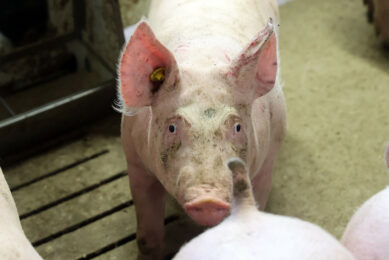SIV research: lung lesions larger with H1N1
Thai research into several subtypes of Swine Influenza Virus (SIV) in Thailand has indicated that subtype H1N1 causes greater lung lesion scores than subtype H3N2 (Thai isolates) in weanling pigs.
This was the outcome of research by scholars from the Thai Chulalongkorn University and the Thai National Institute of Animal Health in Bangkok. The results were published in Virology Journal.
The objective of the study was to investigate the pathogenesis of these two virus subtypes in 22-day-old Specific Pathogen Free (SPF) pigs.
The study found that all pigs in the infected groups developed typical signs of flu-like symptoms on 1-4 days post-infection (dpi). The severity of the diseases, however, with regards to lung lesions both gross and microscopic lesions was greater in the H1N1-infected pigs.
Results found in both groups
Histopathological lesions related to swine influenza-induced lesions consisting of epithelial cells damage, airway plugging and peribronchial and perivascular mononuclear cell infiltration were present in both infected groups.
Immunofluorescence and immunohistochemistry using nucleoprotein specific monoclonal antibodies revealed positive staining cells in lung sections of both infected groups at 2 and 4 dpi.
Virus shedding was detected at 2 dpi from both infected groups as demonstrated by RT-PCR and virus isolation.
Avian origin
Based on phylogenetic analysis, haemagglutinin gene of subtype H1N1 from Thailand clustered with the classical H1 SIV sequences and neuraminidase gene clustered with virus of avian origin, whereas, both genes of H3N2 subtype clustered with H3N2 human-like SIV from the 1970s.
Related websites
• Chulalongkorn University
• Virology Journal
©











